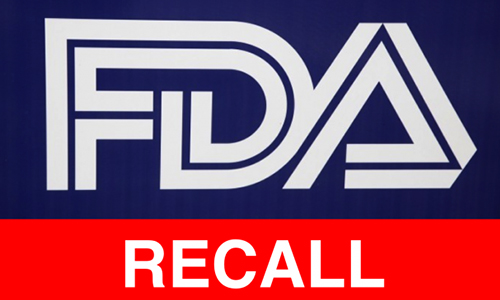FDA to expedite release of recall information
January 22, 2018
Source: Mass Device
 1,072
1,072

When the FDA identifies that a product it regulates violates the law, it protects the public by working with the manufacturer and distributors to facilitate the product’s recall (i.e., removal from the marketplace or product correction). Among other actions, FDA assures that the public is warned when products present the most significant public hazards, including those recalls associated with an outbreak.
Now, as part of a larger effort to increase transparency, empower consumers, and enhance public health, the FDA is working to alert the public sooner whenever a product has been recalled.
The public’s primary source for recall information is FDA’s weekly, web-based Enforcement Report. Historically, only recalls that have already been classified into one of three categories based on the severity of the hazard have been listed in the report. Through classification, FDA indicates the relative degree of health hazard presented by the recalled product. This enables consumers to better understand the severity of the problem posed by a recalled product so they can take appropriate action. FDA also provides guidance to companies on their recall strategies, taking into account the seriousness of the hazard presented by the recalled product.
However, recall classifications can sometimes take weeks – or even months when FDA needs to conduct a complex evaluation. Such analysis can involve determining whether any diseases or injuries have already occurred, the likelihood that a hazard might occur, or whether vulnerable segments of the population, such as children, are more at risk.
FDA has decided that the public would benefit by having recall information about FDA-regulated products as soon as possible, even though further evaluation remains to be done. Moving forward, FDA will include “not-yet-classified” recalls of human drugs, foods, and veterinary products in the weekly Enforcement Report, even while classification work is still ongoing.
As an example of how this will work, FDA recently posted a “not-yet-classified” recall of a certain lot of animal feed that contained monensin, which can be toxic to cattle at certain levels and could result in cardiovascular illness or death to cattle.
Posting “not-yet-classified” recalls will not affect current FDA protocols for working with companies to ensure that they quickly alert entities in the supply chain as soon as they have identified a problem with their marketed product. Also, FDA will continue to monitor the recalling company’s actions to correct or remove products held by retailers, pharmacies, grocery stores, and hospitals.
In addition to adding “not-yet-classified” recalls of human drugs, food, and veterinary products to the Enforcement Report, FDA recently began posting early summaries of correction or removal actions” involving serious problems with medical devices in the Medical Device Recalls Database. FDA has also enhanced the website’s search capabilities. Returning to the site after viewing “not-yet-classified” recalls is recommended because more information is often made available once a recall has been classified.
By DduRead more on
- AZ’s Farxiga Gets FDA Priority Review For Heart Failure January 8, 2020
- Global Recall of CyPass Micro-Stent by Alcon September 3, 2018
- Breakthrough Device Designation Granted to Digital Intervention for Alzheimer’s August 27, 2018
- FDA Approved Eye Drop Oxervate to Treat Neurotrophic Keratitis August 27, 2018
- First Dual-Lead Nerve Stimulator for Pain Management gets FDA Nod August 22, 2018
your submission has already been received.
OK
Subscribe
Please enter a valid Email address!
Submit
The most relevant industry news & insight will be sent to you every two weeks.



